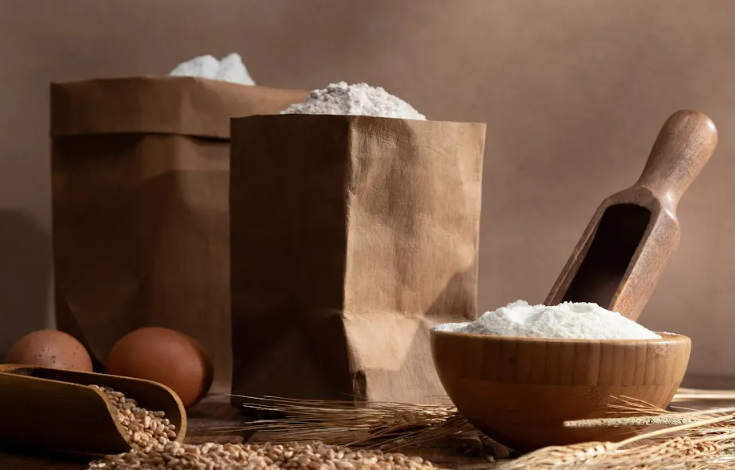Choosing the Best Flour: Your Ultimate Guide to Baking Success

As you embark on your baking journey, selecting the right flour can make all the difference between a culinary masterpiece and a disappointing disaster. With an array of options lining store shelves, from all-purpose to self-rising and specialty flours, navigating this crucial ingredient can be overwhelming. Understanding the unique properties and purposes of each flour type is essential for achieving the perfect texture, flavor, and structure in your baked goods. This comprehensive guide will equip you with the knowledge to confidently choose the ideal flour for any recipe, ensuring your cakes rise to perfection, your bread develops the perfect crumb, and your pastries achieve that coveted flaky texture. Let’s explore the world of flours and unlock the secret to baking success.
Types of Flour and Their Uses in Baking
When you’re embarking on a baking adventure, choosing the right flour is crucial for achieving the perfect texture and flavor in your creations. Let’s explore some common types of flour and their ideal uses in the kitchen.
All-Purpose Flour
This versatile flour is your go-to for a wide range of baking projects. With a moderate protein content, it’s suitable for cookies, bread, and pastries. You’ll find it in most kitchens due to its adaptability.
Cake Flour
For those delicate, tender cakes and cookies you crave, cake flour is your best friend. Its lower gluten content results in a finer, softer crumb. When you’re aiming for that melt-in-your-mouth texture, reach for cake flour.
Pastry Flour
Sitting between cake and all-purpose flour in terms of protein content, pastry flour is ideal for pie crusts, tarts, and biscuits. It provides just enough structure without toughening your baked goods.
Whole Wheat Flour
If you’re looking to boost the nutritional value of your bakes, whole wheat flour is an excellent choice. Made from the entire wheat kernel, it offers more fiber and nutrients. Use it in bread, muffins, and hearty cookies for a nuttier flavor and denser texture.
Self Rising Flour
Self rising flour is an option that comes with leavening agents already mixed in, making it perfect for quick breads, biscuits, and pancakes. Remember, though, that it’s not suitable for yeast-based recipes.
When selecting flour, consider the protein content, which affects gluten development and final texture. Always check the expiration date and store your flour properly to ensure the best results in your baking endeavors.
How to Choose the Right Flour for Your Recipe
Understanding Flour Protein Content
When selecting flour for your baking needs, it’s crucial to consider protein content. Higher protein levels in flour result in chewier, yeast-risen products like bread. All-purpose flour typically contains about 11.7% protein, while bread flour boasts a higher content of approximately 12.7%. This difference significantly impacts the texture and structure of your baked goods.
Matching Flour to Your Recipe
For cookies and cakes, opt for cake flour. Its lower gluten content produces tender, delicate results. Conversely, when baking bread or pizza dough, choose bread flour for its higher protein content, which creates a chewy texture and helps dough rise effectively.
All-purpose flour serves as a versatile option for many recipes, but specialized flours can elevate your baking. Self rising flour, for instance, includes leavening agents and salt, making it ideal for quick breads and biscuits.
Qualities of Good Flour
When selecting flour, consider the following factors:
- Freshness: Check the expiration date and ensure proper storage.
- Texture: Look for finely milled flour without clumps.
- Color: Choose flour with a consistent, off-white hue.
- Brand reputation: Opt for trusted brands known for quality.
By understanding these aspects and matching flour types to your specific recipes, you’ll significantly improve your baking outcomes. Remember, the right flour can make all the difference between a good bake and a great one.
Self Rising Flour: What Makes It Different and When to Use It
Self rising flour is a unique blend that can simplify your baking process and yield consistently light, fluffy results. Understanding its composition and ideal uses will help you determine when to reach for this specialized flour in your culinary endeavors.
Composition and Characteristics
Self rising flour distinguishes itself from other varieties through its pre-mixed leavening agents. This convenient mixture typically contains all-purpose flour, salt, and baking powder. The inclusion of these rising agents eliminates the need to measure and add them separately, streamlining your baking routine. It’s important to note that self rising flour generally has a lower protein content compared to standard all-purpose flour, resulting in a softer, more tender crumb in your baked goods.
Ideal Applications
You’ll find self rising flour particularly well-suited for quick breads and other recipes that don’t require yeast. Its built-in leavening power makes it perfect for:
- Fluffy pancakes and waffles
- Tender biscuits and scones
- Light and airy muffins
- Simple cakes and cupcakes
When using self rising flour, remember to omit any additional salt and baking powder called for in your recipe to avoid over-leavening.
Considerations and Substitutions
While self rising flour offers convenience, it’s not a one-size-fits-all solution. For recipes requiring precise control over leavening or those with acidic ingredients that may react with the baking powder, you may prefer to use all-purpose flour and add leavening agents separately. If a recipe calls for self rising flour and you don’t have any on hand, you can create a substitute by adding 1 1/2 teaspoons of baking powder and 1/4 teaspoon of salt to each cup of all-purpose flour.
Conclusion
In your quest for baking perfection, selecting the right flour is paramount. From all-purpose to self-rising, each type serves a unique purpose in creating delectable treats. Remember to consider protein content, gluten strength, and intended use when choosing your flour. For consistent results, opt for reputable brands and store your flour properly. By understanding the nuances of different flours and their applications, you’ll elevate your baking game and delight taste buds with every creation. Armed with this knowledge, you’re now equipped to confidently navigate the baking aisle and select the ideal flour for your culinary endeavors. Happy baking, and may your future creations rise to new heights of flavor and texture!




